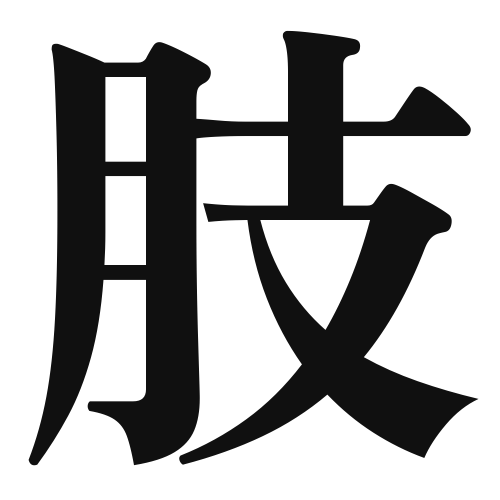1. Overview of Meaning
The kanji “肢” (shi) primarily means “limb” or “appendage.” It refers to the parts of the body such as arms and legs, and can also be used metaphorically to describe extensions or branches of something.
2. Formation and Radical
The kanji “肢” is a phonetic compound (形声文字) that combines the radical “肉” (meaning “meat” or “flesh”) with the phonetic component “支” (which contributes to the pronunciation). The radical indicates that the character is related to the body.
The radical for “肢” is 肉, which is commonly associated with body parts and flesh-related meanings.
3. Examples of Usage
Common words and phrases that include “肢” are:
- 肢体 (したい, shitai) – “limbs” or “body” in a medical context
- 肢解 (しかい, shikai) – “dismemberment”
Example sentence in daily conversation:
「彼はスポーツをしているので、肢体がとても強いです。」
(He is very strong because he plays sports and has strong limbs.)
4. Synonyms and Antonyms
Similar kanji with related meanings include:
- 手 (て, te) – “hand” (refers specifically to the hand, while “肢” refers to limbs in general)
- 足 (あし, ashi) – “foot” or “leg” (also specific to lower limbs)
Antonyms include:
- 頭 (あたま, atama) – “head” (as it refers to a different part of the body)
5. Cultural and Historical Background
The kanji “肢” is often used in contexts related to health and anatomy in Japanese culture. It can be found in medical terminology and discussions about physical fitness.
Proverbs and idiomatic expressions that include “肢” are less common, but the concept of limbs is often associated with strength and capability in various sayings.
